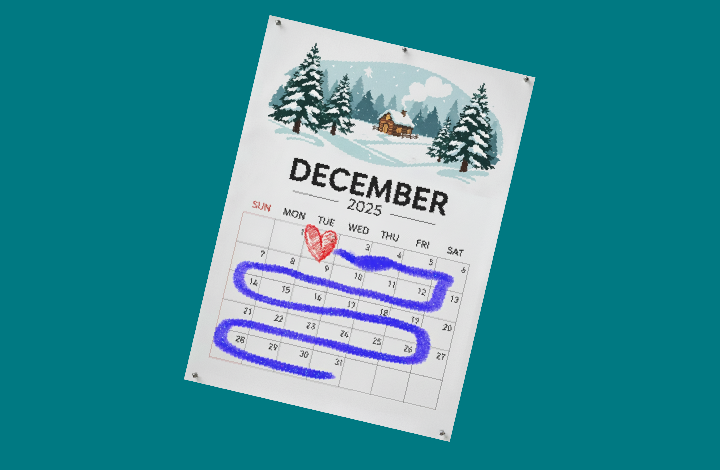Find the right words for GivingTuesday (and all-year-round) messaging

The words and tone you use matter – in fundraising as much as in everyday life. "Get out of my way!” is not the same as “Pardon me, please.” So it is with how you ask a person to contribute to your nonprofit's mission: the pitch of your ask can lead to very different results.
As you build your GivingTuesday game plan, use this article to review some of the important ways you can refine your campaign and call-to-action language to elicit a strong response from your supporters. (If you don’t already have a structured fundraising plan, now's the time to set one up that gets you from today to GiveTuesday... and then through the end of the year. Better yet, use the free outline we’ve pulled together to guide you every step of the way.)
Set a focus
Before we get to the nitty-gritty of your word choices, remember to set the scope of your campaign.
Keep it simple
Zero in on one story and one call to action (CTA). Donors welcome clarity. Too many details and/or actions can dilute your message. A simple, repeatable story wins attention and drives action.
Choose your scope
Decide whether you want to push out general messaging (when your mission is broad or you need flexible funding) or a program-specific appeal (when you want a specific campaign to feel tangible and emotional).
Open your words toolbox
Whether you plan to share something easy to relay or a heady, complex thought, tinker with different versions of your message, tailoring them to different audiences and delivery methods. One size definitely does not fit all.
Also remember: It takes an average of seven touchpoints across all channels before a donor engages with a campaign. Keep at it and look at some of our social media strategy ideas for Giving Tuesday.
In all cases, keep the following in mind and review the included example.

Be concise
Keep the core copy short, clear and natural, especially in emails, letters and social media captions where it’s easy to run on.
- Avoid technical or industry jargon, unless it’s especially relevant.
- Write like you’re explaining something to someone who is sitting across from you.
- When possible, use bullet points to highlight key takeaways or success metrics.
Connect emotionally
Tug at your supporters’ heartstrings. Tell a powerful, human story and make your supporters part of that story to show how they can make a difference. The more relatable it is, the easier it is to remember and share as well. Help readers see the "why.”
Use examples
Get specific about the ways different amounts and types of support positively affect your community. Explain that "$25 provides a healthy lunch to 10 unhoused children” or “An hour packing boxes speeds vital medicine to home-bound senior citizens.”.
Ask directly
Don’t beat around the bush. Use evocative language to urge action. Instead of “Would you please consider donating,” go strong with “Donate today to save our county wetlands.”
Lead with transformation
Excellent final results are what you want. It’s essential to present them. But they pack even greater punch when paired with a story about transformation. To do this, outline what used to be the case and then demonstrate, with specifics, how donations changed everything for better.
For example
A results-based statement: Good ✅
“Because of you, Mateo received his very first book from the bookmobile. This GivingTuesday, your gift will help 100 more children like Mateo. Give today to fuel the bookmobile.”
A transformation-driven statement: Great 🎯
“Because of you, Mateo now reads with his mom every night! This GivingTuesday, your gift will help 100 more kids discover the joy of reading. Give today to keep the bookmobile rolling.”
Other considerations
Topics that talk
There’s no limit to the kinds of things you can share:
- Impact stories (“Because of you…” moments)
- Donor spotlights (recurring donors, board members, in-kind partners)
- Behind-the-scenes peeks at staff or volunteers
- Partnership wins or grant news
- Seasonal gratitude posts and holiday thank-yous
Graphics that grab
Draw people in with gorgeous visuals that establish trust, create an emotional hook and are easy to scan.
- Prominently display your organization’s logo.
- Include one visually appealing, high-quality photograph showing the positive impact of your work. Show people engaged in your mission.
- Ensure the overall design is clean and easy to read on both desktop and mobile devices.
- Use our drag-and-drop, editable Canva templates to create eye-catching social media posts.
- Include action buttons in as many places as reasonable.
- Cater to your audience’s needs with appropriately sized (or adjustable) fonts, good contrasting colors and other accessibility concerns in mind.
You know your audience best. Keep that knowledge front of mind as you prepare your campaign materials. Speak directly, humanly and passionately, but always with the purpose of guiding your supporters to give. They know and expect this, and when they feel the authenticity of your message, they will respond.
Want to learn more about this topic and other important GivingTuesday considerations? Check out our on-demand GivingTuesday webinar, download our free GivingTuesday Game Plan and keep an eye out for more giving season materials to come.








.svg)
.svg)
.svg)
.svg)












